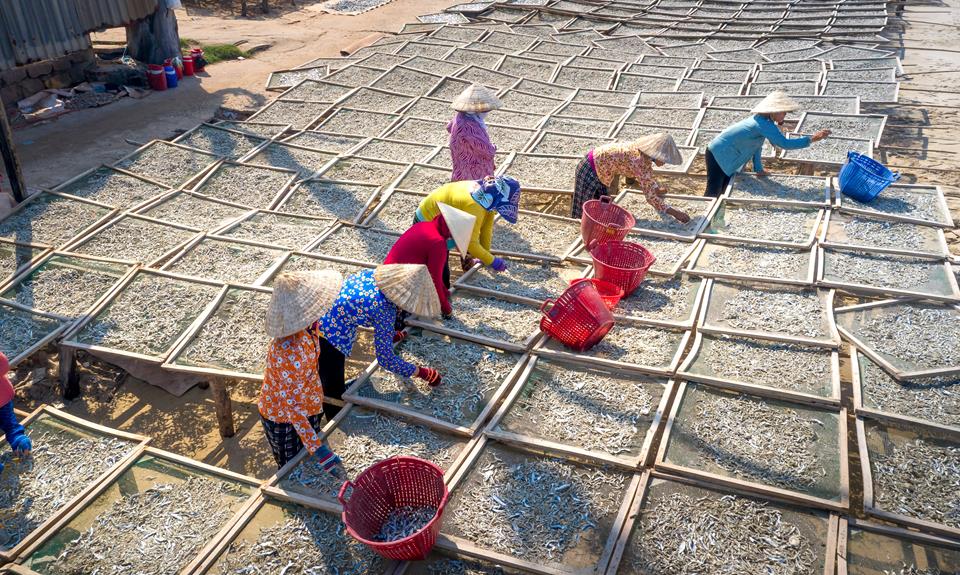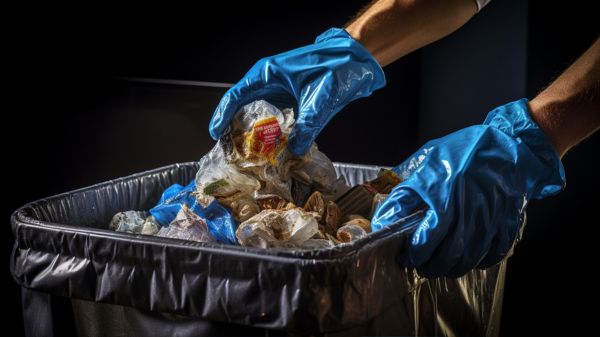What Are Effective Sustainable Fishing Methods?
We thought we knew all there was to know about fishing. Turns out, our old ways were causing harm to the very ecosystems we relied on. But fear not, for we have discovered effective sustainable fishing methods that preserve our precious marine life.
By engaging local communities, implementing ecosystem-based management, using selective fishing gear, reducing bycatch, and establishing marine protected areas, we can fish responsibly. Join us as we dive into the world of sustainable fishing and learn how we can protect our oceans for generations to come.
Local Community Engagement
We actively engage with local communities on a frequent basis to promote effective sustainable fishing methods. This engagement is essential for the preservation of the local economy and the cultural heritage of these communities.
By working closely with the people who depend on fishing for their livelihoods, we aim to ensure that the fishing practices employed are both environmentally responsible and economically viable. Through workshops, trainings, and information sharing, we empower community members to adopt effective sustainable fishing methods that enhance the productivity of their local fisheries while minimizing negative impacts on the marine ecosystem.
Additionally, our collaboration with these communities contributes to the preservation of their cultural traditions and knowledge, which are deeply intertwined with fishing practices. By valuing and supporting local communities, we foster a sense of belonging and encourage their active participation in the sustainable management of their resources.
Ecosystem-Based Management
Ecosystem-Based Management (EBM) is a holistic approach to fisheries management that aims to protect marine biodiversity, balance human needs, and ensure long-term ecological sustainability.
By considering the entire ecosystem, EBM recognizes the interconnectedness of species and habitats, and seeks to maintain the health and integrity of marine ecosystems.
Through strategies such as implementing catch limits, protecting essential fish habitats, and promoting sustainable fishing practices, EBM can help maintain healthy fish populations and safeguard the marine environment for future generations.
Protecting Marine Biodiversity
To protect marine biodiversity, fishermen can employ sustainable fishing practices that prioritize the health and diversity of the ocean ecosystem. By practicing ecosystem-based management, we can ensure the long-term health of our oceans and the countless species that call it home.
Here are two key approaches to protecting marine biodiversity:
Marine Conservation:
- Establishing marine protected areas (MPAs) to safeguard critical habitats and breeding grounds.
- Implementing sustainable fishing regulations, such as catch limits and gear restrictions, to prevent overfishing and protect vulnerable species.
Sustainable Seafood:
- Supporting sustainable fishing practices, such as using selective fishing gear that reduces bycatch.
- Choosing seafood certified by reputable eco-labels like the Marine Stewardship Council (MSC), which ensures the seafood was sourced sustainably.
Balancing Human Needs
Balancing human needs in sustainable fishing involves managing the ecosystem. Ecosystem-based management is a holistic approach that takes into account the interconnectedness of all components within an ecosystem. It aims to balance economic growth and sustainable livelihoods with the preservation of natural resources and the environment.
By considering the needs of both humans and the ecosystem, we can ensure the long-term viability of fisheries while also protecting the health of the marine environment. This includes implementing measures such as catch limits, size restrictions, and seasonal closures to prevent overfishing and promote the recovery of fish populations.
Additionally, it involves promoting sustainable fishing practices that minimize habitat destruction and bycatch, while also supporting the development of alternative income sources for fishing communities.
Through ecosystem-based management, we can achieve a balance between human needs and the preservation of our oceans for future generations.
Long-Term Ecological Sustainability
In achieving long-term ecological sustainability in fishing, we prioritize the interconnectedness of all components within an ecosystem. This approach, known as ecosystem-based management, recognizes that the health of the entire ecosystem is essential for maintaining sustainable fishing practices.
To ensure long-term ecological sustainability, we employ the following strategies:
- Long-term monitoring: Regular and systematic monitoring allows us to assess the health of the ecosystem and track changes over time. This helps us identify any negative impacts or trends that may require intervention.
- Sustainable fishing practices: Implementing sustainable fishing practices, such as setting catch limits, using selective fishing gear, and protecting critical habitats, helps to minimize the impact on fish populations and their habitats.
By adopting these strategies, we can ensure the long-term ecological sustainability of fishing activities while safeguarding the health and balance of the entire ecosystem.
Together, we can strive for a future where fishing practices coexist harmoniously with nature.
Selective Fishing Gear
By implementing selective fishing gear, we can reduce the impact on non-target species and promote sustainable fishing practices. Sustainable gear and fishing techniques play a crucial role in achieving this goal.
Selective fishing gear refers to equipment specifically designed to target certain species while minimizing the capture of non-target species. One example is the use of escape panels or grids in fishing nets, allowing smaller fish to escape while retaining the target species. Another technique is the use of circle hooks, which reduce the likelihood of catching non-target species like sea turtles or seabirds.
By employing these selective fishing methods, we can maintain healthy fish populations, protect vulnerable marine species, and ensure the long-term sustainability of our fisheries.
It’s essential for fishermen, scientists, and policymakers to collaborate and promote the widespread use of selective fishing gear to achieve sustainable fishing practices.
Bycatch Reduction Strategies
Implementing effective bycatch reduction strategies is crucial for promoting sustainable fishing practices and minimizing the impact on non-target species. Bycatch refers to the unintentional catch of non-target species, which can include endangered or threatened species, juvenile fish, and other marine organisms.
To address this issue, fishermen and researchers have developed various strategies to reduce bycatch and improve the sustainability of fishing operations.
Some key bycatch reduction strategies include:
- Modified fishing gear: Using gear modifications such as turtle excluder devices (TEDs) or acoustic deterrent devices (ADDs) can help reduce the capture of non-target species like sea turtles or marine mammals.
- Real-time monitoring: The use of electronic monitoring systems and onboard observers can provide real-time information about bycatch, allowing fishermen to adjust their fishing practices accordingly.
Seasonal Fishing Restrictions
To further promote sustainable fishing practices and minimize the impact on non-target species, we can explore the implementation of seasonal fishing restrictions.
Community-based regulations that establish specific seasons or timeframes for fishing can help protect vulnerable species during their reproductive or migration periods. By temporarily closing certain areas or limiting the fishing effort, these restrictions allow fish populations to replenish and maintain healthy stock levels.
Such measures not only contribute to the long-term sustainability of fish stocks but also support the overall health of marine ecosystems. Seasonal fishing restrictions are a valuable tool in sustainable fisheries management, providing a balance between the needs of fishing communities and the conservation of marine resources.
Marine Protected Areas
Marine Protected Areas (MPAs) are valuable tools for conserving marine biodiversity and promoting sustainable fishing practices. These designated areas restrict or prohibit certain activities to protect vulnerable species and habitats.
MPAs can vary in size and level of protection, and their effectiveness depends on proper management strategies, such as monitoring and enforcement. Increasing global coverage of MPAs is crucial for preserving the health and resilience of our oceans.
Benefits of MPAs
We frequently observe the numerous benefits of Marine Protected Areas (MPAs) in our efforts to promote effective sustainable fishing methods. MPAs are designated areas in the ocean where human activities, such as fishing and mining, are restricted or prohibited. These areas serve as sanctuaries for marine species and habitats, contributing to the regeneration of fish stocks and the overall health of the marine ecosystem.
The benefits of MPAs extend beyond conservation; they also play a crucial role in supporting the local economy and providing sustainable livelihoods for coastal communities.
- MPAs can attract tourists, boosting revenue for local businesses and creating job opportunities in the tourism industry.
- By preserving fish stocks, MPAs ensure a steady supply of fish for local fishermen, ensuring their long-term economic viability and promoting sustainable fishing practices.
Global MPA Coverage
Our research has revealed a significant increase in the global coverage of Marine Protected Areas (MPAs).
MPAs are designated areas in the ocean where human activities, such as fishing, are restricted or prohibited to conserve marine ecosystems and promote sustainable fisheries.
The effectiveness of MPAs in achieving their conservation goals varies depending on factors such as their size, location, and level of enforcement. Studies have shown that well-designed and properly enforced MPAs can lead to positive ecological outcomes, such as increased fish biomass and biodiversity.
However, the economic impacts of MPAs can be a concern for fishing communities and industries that rely on marine resources. It’s important to balance conservation objectives with the socio-economic needs of local communities to ensure the long-term success of MPAs.
MPA Management Strategies
Continuing the discussion from the previous subtopic on global MPA coverage, it’s important to consider effective management strategies for Marine Protected Areas (MPAs) to ensure their success in achieving conservation goals and supporting sustainable fisheries.
MPA monitoring plays a crucial role in evaluating the effectiveness of these strategies. By regularly monitoring the status of the protected areas, scientists and policymakers can assess the health of the ecosystem, track changes in fish populations, and identify any threats or disturbances. This information allows for adaptive management, where strategies can be adjusted and improved based on real-time data.
In addition to monitoring, implementing sustainable fishing practices within MPAs is vital. This involves using methods such as selective fishing gear, catch limits, and seasonal closures to prevent overfishing and protect vulnerable species.
Responsible Aquaculture Practices
Implementing responsible aquaculture practices is crucial for the sustainability of our fisheries. Responsible farming involves adopting sustainable practices that minimize negative environmental impacts and ensure the long-term viability of fish stocks.
This includes carefully managing water quality, preventing the spread of diseases, and minimizing the use of antibiotics and chemicals. Practices such as integrated multitrophic aquaculture (IMTA) can help reduce waste and enhance ecosystem resilience by cultivating multiple species together.
Additionally, responsible aquaculture practices prioritize the welfare of farmed fish, ensuring they’re kept in suitable conditions and minimizing stress and disease.
Traceability and Certification Programs
To ensure the responsible aquaculture practices mentioned earlier, it’s essential to establish traceability and certification programs. These programs play a vital role in promoting sustainable fishing methods by providing consumers with the assurance that the seafood they purchase meets certain certification standards. Here are two key benefits of traceability and certification programs:
- Supply chain transparency: These programs enable the tracking of seafood from its source to the market, ensuring that it has been harvested using sustainable methods. This transparency allows consumers to make informed choices and supports the demand for responsibly sourced seafood.
- Certification standards: By adhering to specific certification standards, such as those set by organizations like the Marine Stewardship Council (MSC) and Aquaculture Stewardship Council (ASC), fisheries and aquaculture farms can demonstrate their commitment to sustainable practices. These standards cover various aspects, including environmental impact, social responsibility, and traceability.
Implementing traceability and certification programs is crucial for fostering sustainable fishing practices and ensuring the long-term health of our oceans.
Education and Awareness Initiatives
We will now delve into the importance of education and awareness initiatives in promoting sustainable fishing methods.
Education initiatives and awareness campaigns play a crucial role in ensuring the long-term sustainability of our fish stocks and marine ecosystems. By providing information and raising awareness about the impacts of overfishing, destructive fishing practices, and the importance of sustainable fishing methods, these initiatives empower individuals, communities, and stakeholders to make informed decisions and take actions that contribute to the conservation of our marine resources.
Education programs can be targeted towards fishermen, consumers, policymakers, and the general public, fostering a sense of responsibility and promoting a collective effort towards sustainable fishing practices.
Furthermore, awareness campaigns can help create a sense of belonging and shared responsibility for the preservation of our oceans, inspiring individuals to support sustainable fishing practices and demand responsible seafood choices.
Conclusion
In conclusion, by incorporating local community engagement, ecosystem-based management, selective fishing gear, and bycatch reduction strategies, we can effectively achieve sustainable fishing practices.
Additionally, implementing seasonal fishing restrictions, establishing marine protected areas, and promoting responsible aquaculture practices are crucial steps in preserving our marine ecosystems.
Furthermore, traceability and certification programs play a vital role in ensuring the sustainability of fish populations and preventing illegal fishing practices.
Lastly, education and awareness initiatives are essential in empowering individuals and communities to make informed choices and take action to protect our oceans.
Like a harmonious orchestra, these methods work together to create a symphony of balance in our oceans, ensuring the longevity of fish populations and the health of our marine ecosystems.
Let’s embrace these measures and become stewards of the sea, preserving its beauty for future generations.






